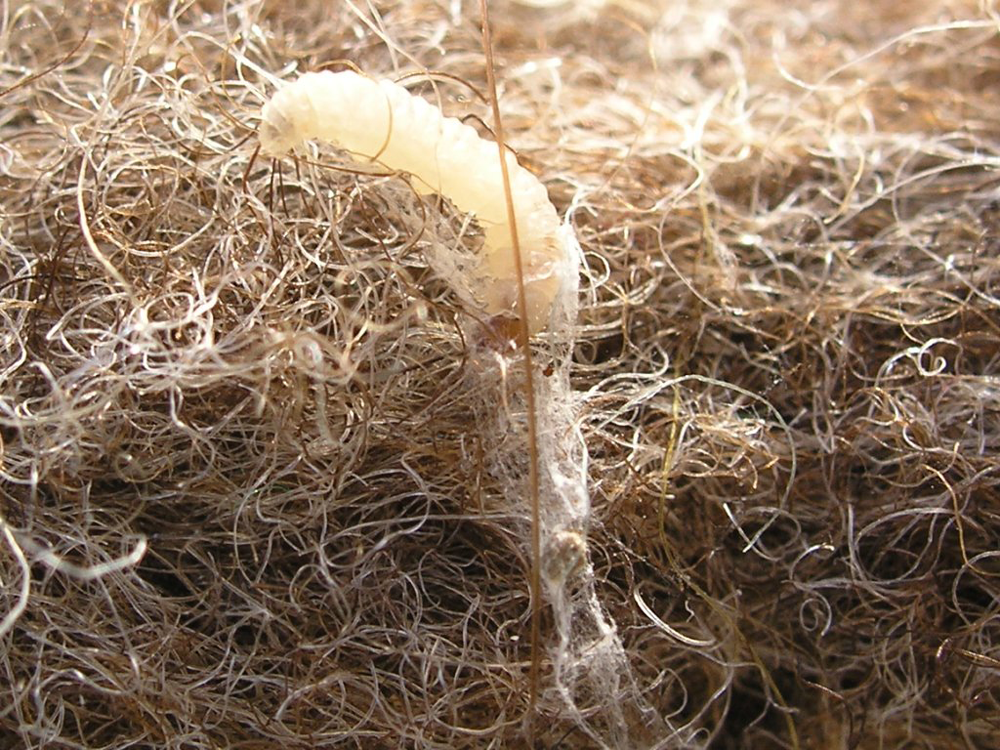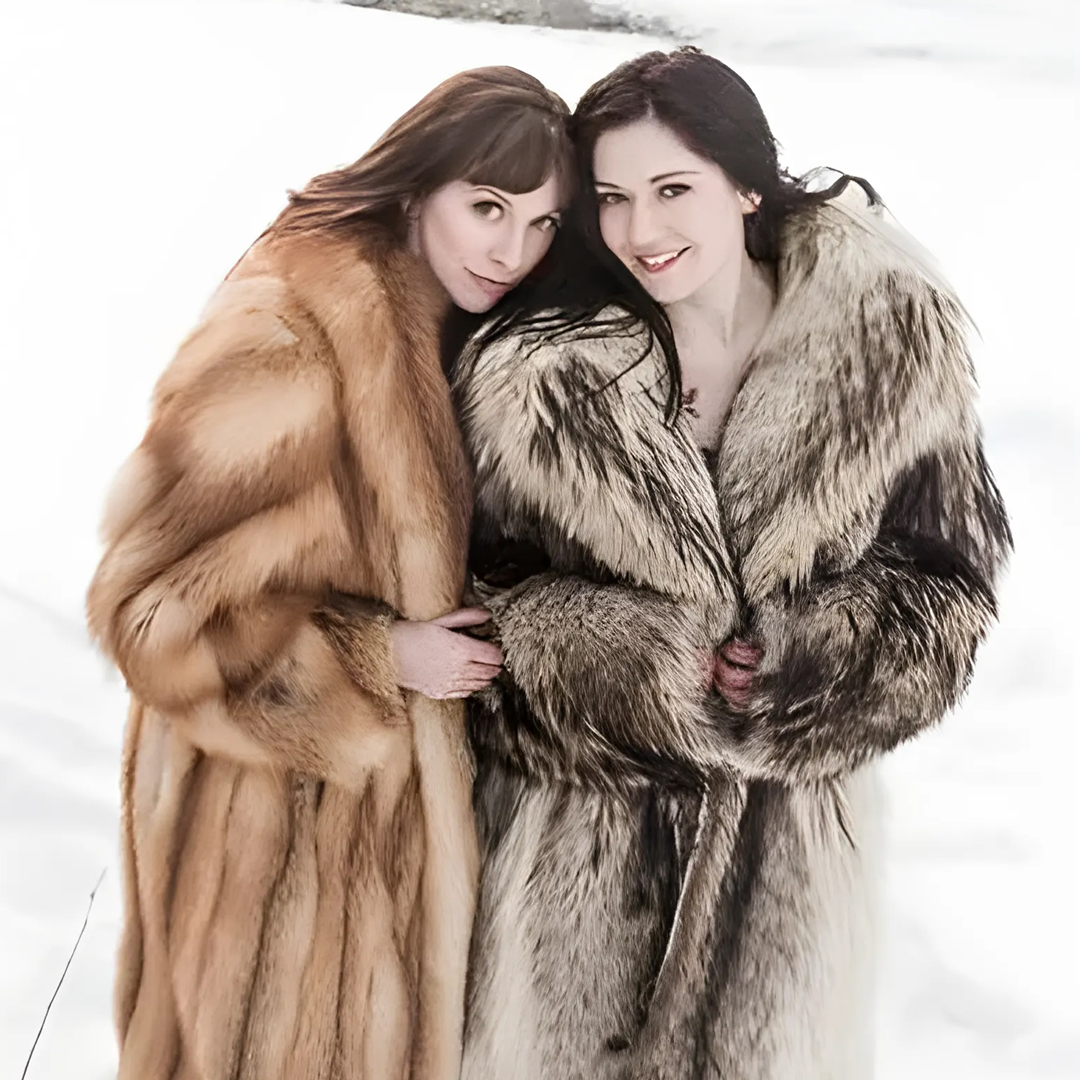Caring for Fur
Photo: Katie Ball, Silver Cedar Studio
Fur is not only beautiful and warm, it’s also extremely durable when cared for correctly. If you take care of your furs, they can become cherished family heirlooms while remaining stylish and functional for generations to come.
So if your goal is to have your fur passed down to your grandchild one day, here are some tips to help you achieve it.
WEARING YOUR FUR
Don’t Fear the Rain
Newcomers to fur often think rain or snow are their garment’s worst enemy, but for most fur types that’s simply not true.
Most natural furs comprise two types of hair. Next to the leather is a dense layer of short, fine, dull-coloured underfur for warmth. On top of this lie longer, stronger, shiny guard hairs which provide protection against wet weather and scratchy objects like branches. A few furs, like sealskin, have only guard hairs, while a few, like chinchilla, have only underfur.
So as a rule of thumb, if your fur has lots of guard hairs, don’t fear the rain. If you’re caught in a shower, just shake your fur out, place it on a proper hanger (see below), and leave it in a well ventilated room to dry slowly. Keep it away from direct heat, and never use a hair dryer! Also, never comb or brush your fur when it’s wet.
For other furs, be more cautious, but not to the point of staying home because there’s a cloud in the sky! That means furs with no guard hairs, but also sheared and plucked furs. Shearing is a common treatment for mink to reduce weight, but by cutting the guard hairs, it leaves the absorbent underfur more exposed. Plucking is sometimes done with mink and beaver, and involves removing the guard hairs entirely.
In an extreme case, like falling in a lake while wearing your chinchilla, take it immediately to a furrier for expert attention.
SEE ALSO: Amazing facts about fur: Dressing for the Arctic. Truth About Fur
No Brooch Pins
The leather backing of fur hates being stabbed with brooch pins, as a small hole – particularly if the brooch is heavy – can easily become a tear. If you must wear a brooch, stick it on a garment you don’t plan on keeping for decades, like a blouse.
Avoid Shoulder Bags
Veteran wearers of fur coats prefer purses to shoulder bags for one simple reason. Shoulder bag straps can break fur hairs and create bald patches.
Limit Sitting Time
We spend half our lives sitting, but try to limit sitting time while wearing fur. Like shoulder bag straps, sitting on fur can break the hairs. And if you must sit in your full-length fur, remember to hitch it up first to avoid stretching the leather under your bottom.
No Perfume or Hairspray
If you like enveloping yourself in a cloud of perfume or hairspray, do it with your fur coat off. These chemicals can dry the fur, remove its lustre, and make it sticky (and thus attractive to dust). And if your fur smells musty, spraying it with cologne won’t fix the problem. It probably needs a good clean!
STORING YOUR FUR
The Right Closet
When hanging your fur coat up for a few days, and especially if storing it at home for the summer, you need the right kind of closet.
Your closet should be dark and cool. Prolonged exposure of your fur to heat or sunlight can cause oxidation, which can reduce its lustre and even cause it to change colour. Heat can also dry out the oils in the fur’s leather, leaving it brittle and prone to tearing.
Your closet should also be spacious, meaning there is room around your fur for air to circulate. This stops the leather from drying out, while stopping mould from developing. For the same reason, don’t hang your coat in a garment bag. If you are packing your fur for a trip and want to give it extra protection, use a bag of loosely woven cloth, never of plastic or with a rubber lining.
Clothes Moths

A clothes moth larva feeding on felt. Photo: Guido Gerding, CC BY-SA 3.0, via Wikimedia Commons
Your closet is also where you may do battle with the number one enemy of any animal fibre garments: clothes moths. These otherwise harmless insects lay their eggs on your garments which then hatch into larvae, and it is these that then make a meal out of your fur, cashmere or wool.
One sign that you likely have a moth problem is if your fur starts shedding hair in clumps (not individual broken hairs, which is quite normal).
So how can you prevent moths from moving in, or if it comes to the worst, what should you do when an infestation has already happened?
Your first thought may turn to moth balls, but people who are not experts at reading labels may want to pass them by. Your grandparents used balls made of naphthalene. These are still available in most countries, and the pungent vapour is an effective deterrent to moths. But it turns out that prolonged exposure also destroys red blood cells and might cause cancer. So most moth balls today are made of p-DCB, but this may be carcinogenic too! Given that the use of both naphthalene and p-DCB in air fresheners and moth balls has been banned in the EU, maybe just forget them entirely.
One popular defence against moths is to line your closet with cedar planks, as moths dislike the scent of cedar oil. However, the long-term effectiveness of cedar closets is questionable as the scent fades over time, and may last only a year or so in a hot, dry climate. So many people opt instead to place a cedar block in their regular wooden closet (not cedar), and when the surface dries out and the scent fades, sand the surface to release fresh scent.
Another variation on the cedar theme is to spray the inside of a wooden closet with diluted cedarwood oil – after having first removed the garments, of course. Or soak cotton balls in cedarwood oil and place them in the closet corners. The same tricks also work with lavender oil, and a number of other natural repellents now on the market.
If you’re too late and moths have already moved in, the surest fix is to have a professional fumigate your whole closet, clothes and all. Or you can go it alone, in which case you first remove all the garments, clean the closet thoroughly, and then go nuts spraying cedarwood or lavender oil. As for the garments, woolen sweaters and the like can safely be put in the freezer, but don’t do this with anything that contains leather. If you’re sure your valuable fur has been attacked by moths, it’s best to take it to a furrier for a professional cleaning.
SEE ALSO: Clothes moths in the fur closet? Prevention better than cure. Truth About Fur
Sturdy Hangers
For fur jackets and coats – anything with shoulders, basically – always use sturdy, broad hangers, preferably with padding. Ill-fitting hangers can damage the shoulders, while flimsy wire hangers are an absolute no-no.
Professional Cleaning and Storage
Furriers recommend that even if your fur doesn’t look dirty, it should be cleaned by a specialist once a year to remove tiny abrasive dirt particles and chemicals. They will also glaze your fur to enhance its lustre.
Furriers also suggest you store your fur with them for the summer in a dedicated vault with strictly controlled temperature and humidity.
Whether or not you use these services is, of course, a judgment call, based on factors like location, budget, and how long you want your fur to last.
But even if you opt to go it alone, furriers still urge you not to take your fur to a dry cleaner’s or apply commercial cleaning products. They also remind customers that bringing a fur in for cleaning or storage presents the ideal opportunity for them to spot any minor repairs that should be done before they become more serious.

